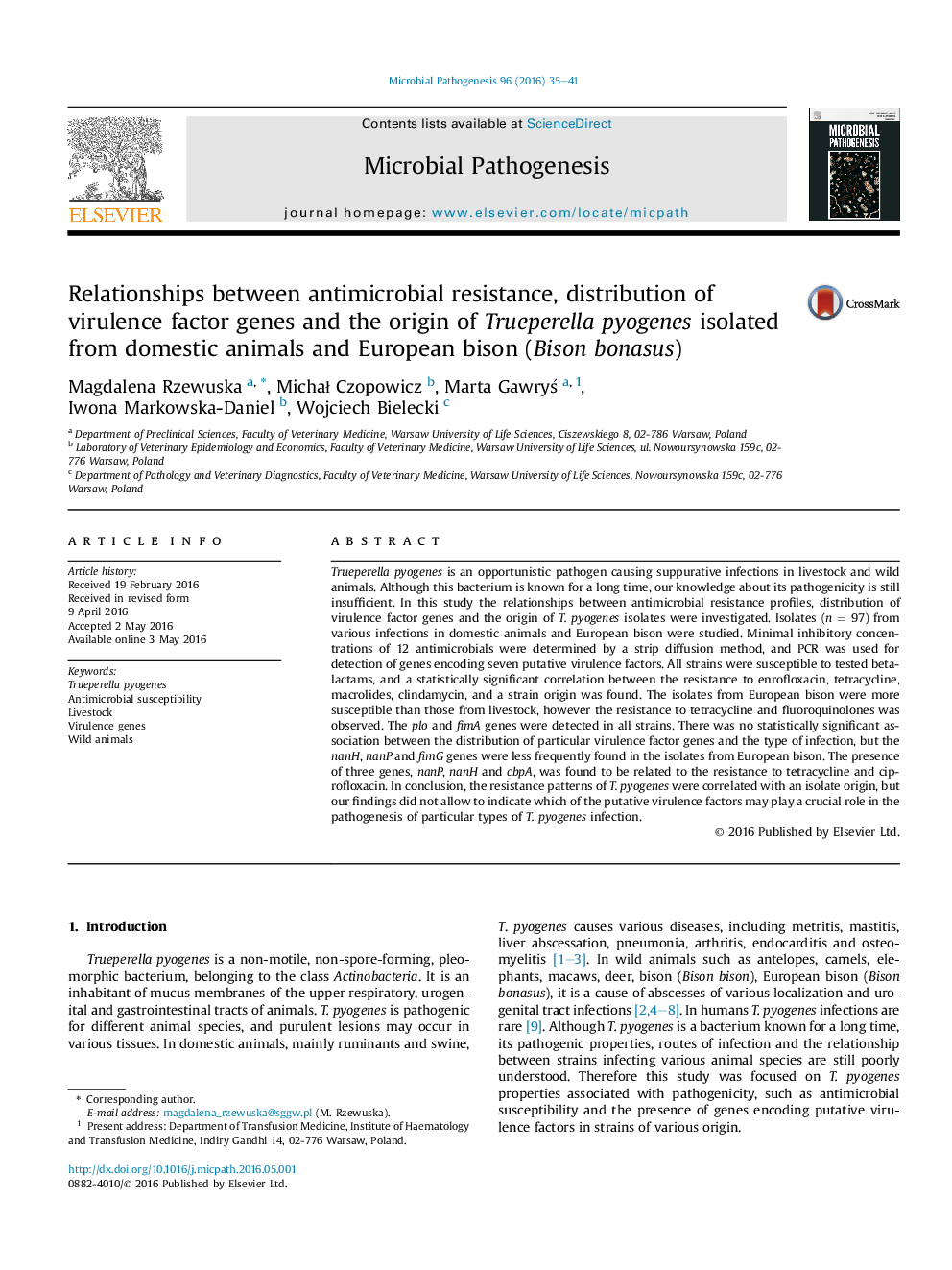| Article ID | Journal | Published Year | Pages | File Type |
|---|---|---|---|---|
| 3416222 | Microbial Pathogenesis | 2016 | 7 Pages |
•The relationship between the resistance patterns and Trueperella pyogenes origin was found.•The isolates from European bison were more susceptible than those from livestock.•There was no correlation between the virulence gene distribution and infection types.
Trueperella pyogenes is an opportunistic pathogen causing suppurative infections in livestock and wild animals. Although this bacterium is known for a long time, our knowledge about its pathogenicity is still insufficient. In this study the relationships between antimicrobial resistance profiles, distribution of virulence factor genes and the origin of T. pyogenes isolates were investigated. Isolates (n = 97) from various infections in domestic animals and European bison were studied. Minimal inhibitory concentrations of 12 antimicrobials were determined by a strip diffusion method, and PCR was used for detection of genes encoding seven putative virulence factors. All strains were susceptible to tested beta-lactams, and a statistically significant correlation between the resistance to enrofloxacin, tetracycline, macrolides, clindamycin, and a strain origin was found. The isolates from European bison were more susceptible than those from livestock, however the resistance to tetracycline and fluoroquinolones was observed. The plo and fimA genes were detected in all strains. There was no statistically significant association between the distribution of particular virulence factor genes and the type of infection, but the nanH, nanP and fimG genes were less frequently found in the isolates from European bison. The presence of three genes, nanP, nanH and cbpA, was found to be related to the resistance to tetracycline and ciprofloxacin. In conclusion, the resistance patterns of T. pyogenes were correlated with an isolate origin, but our findings did not allow to indicate which of the putative virulence factors may play a crucial role in the pathogenesis of particular types of T. pyogenes infection.
